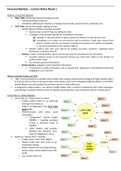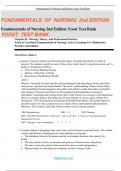Samenvatting
Extended Summary: Multivariate Statistics (1ZM31)
- Vak
- Instelling
This is an extended summary of all lectures for the course Multivariate Statistics (1ZM31). This 22-page document (with a clickable table of contents for easier navigation) summarizes the essence of all topics covered in the course (as far as I could imagine when writing it). It includes as many im...
[Meer zien]










